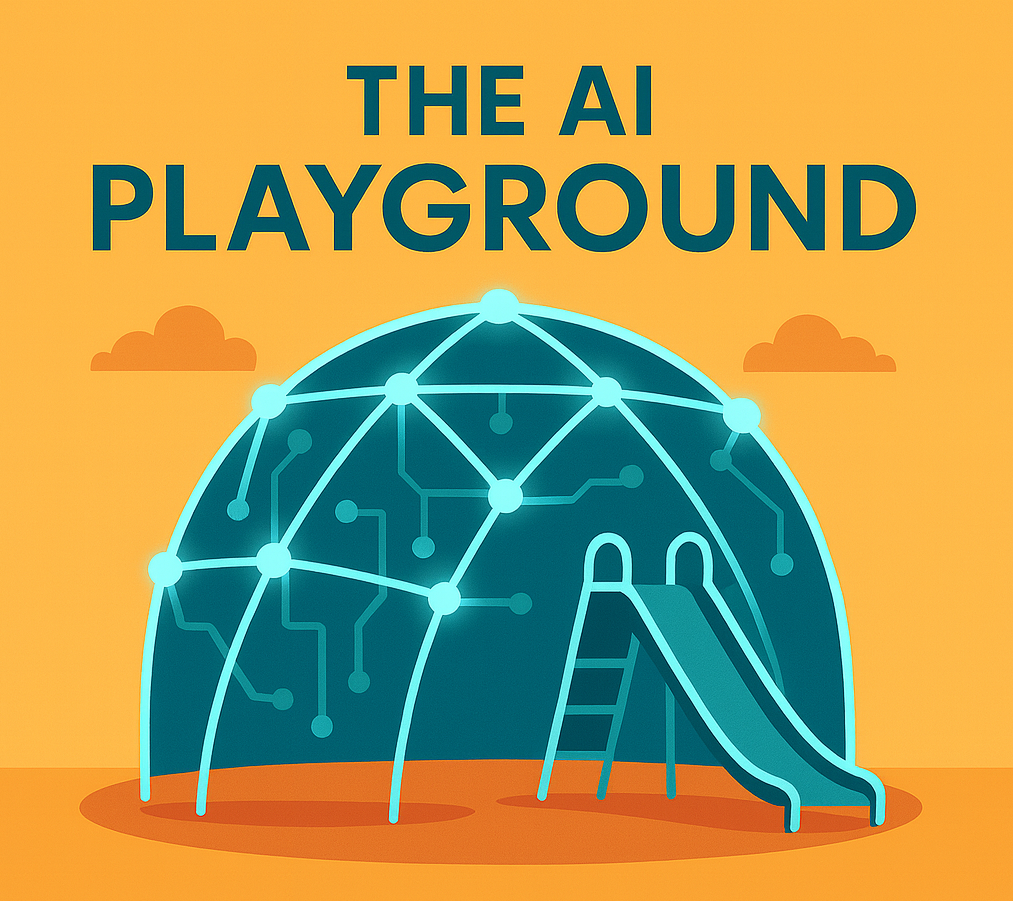 Libraries are trusted spaces for discovery, and introducing AI through play can make the technology feel less intimidating. An AI Playground creates a safe, supportive environment where participants build confidence, spark creativity, and connect with others. Instead of focusing on perfect outcomes, the purpose is to lower barriers and show that AI can be explored with curiosity and joy.
Libraries are trusted spaces for discovery, and introducing AI through play can make the technology feel less intimidating. An AI Playground creates a safe, supportive environment where participants build confidence, spark creativity, and connect with others. Instead of focusing on perfect outcomes, the purpose is to lower barriers and show that AI can be explored with curiosity and joy.
About the AI Playground
An AI Playground is a hands-on event where patrons explore AI tools in a fun, low-pressure setting. Instead of sitting through a lecture, participants try tools, share discoveries, and leave with curiosity and confidence. In The AI Toolkit for Librarians, I describe this format as a playful, high-energy learning space where people can experiment at their own pace. This page expands on that idea by giving librarians ready-to-use resources, highlights, and tips to help create a successful Playground.
Prep Work
The most successful Playgrounds begin with simple, intentional planning. A small pilot group, even just three or four participants, can make the first event feel manageable and provide valuable feedback for the future.
Quick-Start Checklist
-
Team Support: Involve administrators, colleagues, stakeholders, or a tech-savvy partner for shared input and buy-in.
-
Audience: Decide whether the Playground will serve teens, students, seniors, or the general community.
-
Devices: Encourage laptops, tablets, or smartphones (BYOD when possible).
-
Space: Arrange tables and chairs for collaboration; confirm outlets, headphones, and projection.
-
Agenda: Draft a 90-minute flow (Welcome → Show & Tell → Play Time → Share → Celebrate).
-
Materials: Print agendas, feedback slips, and signage.
Before the Event
Advance communication and setup smooth the way for participants and staff alike.
-
Invitation & Registration: Share event details and require advance sign-up.
-
AiTester Accounts: Ask participants to create an AiTester login before attending. Direct them to www.MikeMcQueen.com/AiTester for instructions and privacy notes.
-
Technology Setup: Check projector, audio, Wi-Fi, charging stations, and headphones.
-
Promotion: Spread the word with flyers, social media, the library website, and personal invitations to key stakeholders.
Sample 90-Minute Agenda
A flexible agenda helps keep the event structured but playful:
-
Welcome (10 min): Set the tone—fun and discovery are the goals.
-
Show & Tell (10 min): Give 60-second demos of a few tools; invite participants to mention favorites.
-
Play Time (50 min): Participants explore in pairs, small groups, or solo; facilitators circulate to encourage and capture highlights.
-
Show-n-Share (10 min): Brief shares of wins, methods, or challenges.
-
Celebrate (10 min): Wrap up with “aha” moments, feedback, and possible next steps.
During the Event
-
Greet participants and ensure everyone can log into WIFI.
-
Circulate, encourage, and celebrate small discoveries.
-
Remind participants not to share personal information.
-
Collect reflections: “What surprised you today?” or “What tool do you want to try again?”
-
Take photos (with permission) to showcase the event afterward.
After the Event
-
Jot down quick notes about what worked and what could improve.
-
Post photos in a collage inside the library or online.
-
Thank collaborators and update stakeholders with success stories.
Key Tips for Success
-
Start small with a pilot group to keep things manageable.
-
Encourage participants to bring their own devices so they can continue exploring afterward.
-
Emphasize discovery rather than completion or mastery.
-
Celebrate even small wins. Confidence is the real outcome.
-
Model curiosity by trying something new yourself during the session.